Ballot fraud is as American as apple pie
Exploring the secret history of American ballot fraud
This post is not about whether Biden or Trump actually won the 2020 election!!!! Just get the issue out of your mind.
A few months ago, I wrote an article on a survey that gives us a glimpse at the scale of ballot fraud in recent American elections. My main point was that self-reported behavior that constitutes the legal definition of ballot fraud is larger than the margin of victory in competitive elections. This seriously calls into question the legitimacy of all competitive elections in the United States.
Based on the comments, I think most readers are unwilling to accept the implications of these survey results. I believe the biggest reason is that most Americans privately think “It cannot happen here. Not in 21st Century America. Ballot fraud is what happens in other poor or authoritarian countries, but not in the United States.”
I believe this is a fundamental misreading of American political history. Back when I was a professor, I used to teach a course on American political history, so I know something about the topic. I also know how naive many people are about the role ballot fraud has played in American political history.
Sorry, but …
Today I am going to explore a part of American political history that is almost completely ignored in the history books. Let me start by making a bold claim.
Ballot fraud has been a central component of American democracy for centuries.
I know that this statement will shock many people, particularly Americans, but it is true. To be more specific, ballot fraud and other fraudulent electoral practices, played a decisive role in which candidate won elections from the 1830s until at least the 1970s.
To be clear, we do not know how widespread ballot fraud was, but we do know that it was an accepted practice by those who ran elections in many if not most regions. We also can logically assume that the practice was far more widespread among Democrats rather than Republicans.
Note: Before you heap hate on me in the comments, read the rest of the post first!
I know that many readers will think that what I am about to say is just misleading history, but it is not. I have a Ph.D. in Political Science and Public Policy from Brown University and have taught multiple courses on American political history. I have also run for state-level office as a Democrat.
What you are about to read is not controversial among historians of American political history. It is just a part of American political history that most would prefer to gloss over or ignore. Conservatives ignore this part of American political history because it seems unpatriotic to point out such obvious deviations from a patriotic history. Liberals ignore it because it makes their favored party look very bad.
To keep the length of this post manageable, I will not include a full description of all the historical evidence. Instead, I will link to Wikipedia articles, which you can read at your leisure if you have doubts.
The USA lacked a secret ballot for over 100 years
A key reason why ballot fraud was so widespread was the lack of a secret ballot (often known as an Australian ballot). The US Constitution delegates running elections to the state governments, so practices varied widely, but the following was the rule before 1880:
The partisan candidates were selected by party leaders.
A significant percentage of voters were either illiterate or immigrants who had minimal ability to read in English.
Ballots were not printed by governments. Instead, partisan newspapers typically printed pre-filled-out ballots. It is not clear to me that voters even had the option of starting with blank ballots.
Voters cast ballots in full view of local party representatives. Typically, only one party had representatives at the voting precincts: the majority party.
Ballots were often colored, so it was very easy for local party representatives to see who voted for the opposition party. Because most neighborhoods were tight-knit, it is likely that the voter and the local party representative knew each other and could easily recognize each other.
Ballots often gave no ability to vote for:
third parties,
independents
minority factions within the party that fail to get the nomination
mix-and-match Democratic and Republican candidates.
Because local party representatives played an important role in which individuals received government services, the economic cost of voting for the opposition might be substantial.
Voters from minority ethnic, racial, or religious groups were under significant pressure to either not vote or vote for the majority party in the region.
It is not difficult to see how this electoral system was vulnerable to massive fraud. To be fair, it is quite likely that the majority party would have won the vast majority of the elections anyway, but electoral support for opposition candidates would be seriously undermined by fear of reprisal. It would take very widespread popular anger by the majority of voters to overcome the institutional bias in this process.
And even then ballot fraud could still be easily implemented when all ballots are already pre-filled and look exactly the same. A local party official could just drop in an extra thousand ballots when no one was looking, and it was impossible to prove that anything went wrong.
The Australian Ballot
Following the highly contested results of the 1884 Presidential election, many reformers began to look at the so-called Australian ballot, as an alternative. Grover Cleveland, a Democrat “won” the election, becoming the first Democratic President since immediately before the Civil War. The Australian ballot seemed to be a much fairer method to run elections.
The key characteristics of Australian ballots were:
identical blank ballots were printed by the local government at public expense,
the blank ballots displayed all nominated candidates
ballots were distributed only at the polling place
voters marked their ballot in secret at the voting precinct.
At a similar time, many state governments, particularly in the West, established initiative and referenda to completely avoid the state political establishment. In addition, the Seventeenth Amendment to the US Constitution gave voters the right to directly elect US Senators in each state. Previously, this was the domain of state legislatures. With the exception of party primaries to nominate candidates, most of the characteristics of the modern American electoral system were established during this period.
The Australian ballot was a major step forward, but it still did not eliminate ballot fraud. It just made it a bigger logistical challenge.
The Institutional foundations of the Democratic party
From the 1830s when the Democratic party was first established until the mid-1960s, the Democratic party was based upon two major constituencies:
Irish Catholics in the large metro areas of the Northeast and Midwest, particularly New York City, Chicago, Philadelphia, Boston, Detroit, Baltimore, and Cleveland. Non-Irish Catholics were added after 1932.
Whites in the South, particularly former Confederate states.
In 1932 the New Deal added a new core constituency in the form of the Catholic working-class voters who were organized into trade unions. This made the trade unions the third organizational basis of the Democratic party. To a certain extent, trade unions are still an influential organizational basis of the Democratic party, although their influence and numbers have seriously declined since the 1970s.
The map below clearly shows the core constituencies of the two parties before the New Deal. The South, where few blacks were allowed to vote, was overwhelmingly Democratic. The rest of the US was overwhelmingly Republican except a few Democratic big cities. Note the dark blue and dark red are districts that changed parties in the 1928 elections, so they are not relevant to this topic.
There were other demographic groups who reliably supported the Democratic party, but these two and later three demographic groups were the core of the Democratic party coalition until the 1960s.
White Supremacy in South
From the Civil War until the Civil Rights era, Southern politics was dominated by a zero-sum race struggle between whites and blacks. The term “White Supremacy” is often thrown around far too easily today, but it is a perfect description of the Democratic party in the South from the 1830s until about 1970.
Before the Civil War, White Supremacy in the South was enforced by law through the practice of slavery and Black Codes. Among the laws was an almost complete exclusion of black civil or voting rights.
After the disputed 1876 Presidential election ended Reconstruction, the Republican party essentially decided to abandon black Republicans in the South and focus their efforts on winning support in other regions. White Southerners rallied to the Democratic party and voted for the party in almost monolithic numbers. Black civil and political rights disappeared from Southern politics for the next seventy years.
After 1874 White Supremacy in Southern states was undergirded by Jim Crow laws that made it essentially illegal or at least extremely difficult for blacks to vote. Both the Black Codes and Jim Crow laws included a form of ballot fraud that kept one entire group, in this case, blacks, from voting at all.
The Democratic party established a political and economic system based on White Supremacy but without slavery. As long as the South did not attempt to reestablish slavery, Northern Republicans were willing to look the other way.
The Solid South
The “Solid South” (i.e. almost universal white support for the Democratic party) gave a small minority of white southerners a veto power over the Democratic party for one century. From 1874 to about 1970, White Southerners dominated the Democratic state parties, and they leveraged their dominance over 14 Southern states to control the Democratic party on the federal level.
This small group effectively controlled:
the state and local governments in the South
25% of the seats in the US House and Senate
A veto power over the Democratic presidential nomination process. The latter was institutionalized by the “Two-Thirds rule” from 1832 to 1936.
In 1964 and 1965 with the passage of the Civil Rights Act and Voting Rights Act, white southerners began to leave the Democratic party. Both were bipartisan in the sense that majorities of both parties voted in favor of sweeping changes, but:
A larger percentage of Republicans voted in favor than Democrats
Southern Democrats led the opposition and voted almost monolithically against the legislation
Without the systematic fraud of Jim Crow laws, white elected officials now had a strong incentive to campaign for black votes. White southerners began to leave the Democratic party, partly because they were still opposed to the end of Jim Crow and partly because the Democratic party was rapidly drifting towards the Left on most issues.
White southerners were always one of the most conservative voters in American politics, but as long as the Democrats represented White Supremacy, they were very happy to support the party. Once the Democrats dropped their support for White Supremacy, white southerners naturally gravitated toward the more conservative party. By 1994, the hold of the Democratic party over the South had collapsed. The region is now dominated by the Republican party, except in major metro areas.
Democratic Urban Machines
Just as important as the Solid South were the urban machines of the Democratic party. These machines dominated city politics in the Northeast and Midwest at least through the 1970s.
The most famous was Tammany Hall, which essentially ran New York City politics for over a century. Tammany Hall served as a template for urban Democratic machines throughout the nation.
To be fair, Republicans also had their urban machines, but they were rarely as large or as effective as Democratic urban machines. Republican parties essentially copied Democratic urban machines as a means of political survival. In general, Republicans relied on Protestant rural and small-town voters who are much harder to organize into machines because of their dispersed populations.
The power of Democratic urban machines was based on the following:
Federalism, which gave a significant amount of power to local and state governments.
Single-member districts, which made it possible for one party to dominate a specific geographical area for decades.
Party nomination by closed caucuses. Essentially, the local party leaders chose their party nominees in “smoke-filled rooms.”
The extraordinary talent of Irish politicians. No ethnic minority has played anywhere near as important a role in politics as the Irish Catholics. They particularly excelled at personal charisma and local political organization.
The apogee of Irish political power was reached in 1960 with the election of John F. Kennedy, who relied heavily on support from Democratic urban machines. The Kennedy family political legacy is a still surviving element of this once-powerful Irish legacy.
And, yes, in 2024 we have another Kennedy is running for President. This is a full 140 years after the first Kennedy won elected office!A very limited American welfare state until 1932, which gave an opportunity to machine politicians to provide tangible benefits to potential voters, particularly new immigrants from Catholics.
Virtually no professional civil service and a patronage system (often called the “spoils system”) that enabled elected officials to disperse tax revenue, jobs, and political favors to their supporters.
Systematic ballot fraud (which kept the entire process functioning smoothly and ensured a steady flow of money)
Massive waves of immigrants from the 1840s to 1914, which gave “fresh meat” for the political machines. Many immigrants did not speak English and were desperately poor even by the standards of the day. They were grateful to accept assistance from any institution, regardless of the legality of that assistance.
All of the factors listed above were important to the dominance of Democratic urban machines, but the spoils system and ballot fraud were how they functioned. It is impossible to fully understand the power of Democratic urban machines without acknowledging the existence of systematic ballot fraud.
The political enemies of the Democratic urban machines
The rival Republican party was led by a WASP upper class. Since I have already written an article on the topic, I will not go into detail here.
The transformation of the American upper class
Class is something that Americans do not like to talk about. Most people regard themselves and other people they know as “middle class,” even when they are obviously not. In particular, Americans are uncomfortable talking about the upper class or being labeled as a member of it.
It is very important to understand, however, that before 1970 American politics was not dominated by class cleavage. Most people understand American politics as a clash of economic classes or a struggle between elites and the people. In some ways, they view American politics as a sort of a non-violent version of Karl Marx’s doctrine of class struggle. While there are some cases when this viewpoint is illuminating, it gives a misleading view of American political history.
American political history has always been dominated by:
ethnicity
religion
region
Rather than a vertical struggle between classes, American politics was a horizontal struggle between people living in different sub-regions. Yes, local and regional elites were happy to present themselves as representing “the people,” but that was a rhetorical technique to win elections in their district. If you are interested in this topic, I would recommend reading my article:
Understanding American political history
Back when I was a professor in Political Science in the mid-1990s, I used to teach a course called “American Politics since 1930.” I remember how amazed students were at how much both the Democratic and Republican parties had changed. What is perhaps even more amazing is how much they have changed since the mid-1990s, especially the Democratic party.
It is only very recently, (since 2008 really) that the partisan divide based on class seriously emerged. Even the New Deal era was dominated more by a Northern Protestant vs Catholic cleavage rather than class.
I personally believe that the United States is moving toward a new class divide, where:
The Democratic party represents college-educated professionals, particularly in the major metro areas of the Northeast and Pacific West.
The Republican party represents the working class.
The extent to which this occurs will be based on how much working-class Hispanics and working-class Blacks shift towards the Republican party. That it is clearly the trend now, but it is not clear how far this trend will continue.
Decline of the Urban Machines
Since about the 1970s, traditional Democratic urban machines have declined from their once dominant role because of the following factors:
The increasing dominance of college-educated voters within the leadership of the Democratic party. This has pushed the party to the Left on a series of cultural issues where traditional working-class voters are moderate or conservative: foreign policy, military spending, war, environment, religion, immigration, climate change, abortion, race, gender, sexuality, family structure, etc.
The above list of issues makes many working-class voters perceive themselves as not being represented by the Democratic party.
Civil service reform that undermined the patronage system.
Party caucuses being replaced by primaries open to all Democratic voters. This meant that urban political machines could no longer choose candidates for their party.
The resulting rise of individual politicians who no longer feel tied to the party.
Irish Catholics and other working-class voters integrating into American society and experiencing upward mobility.
Post-World War II suburbanization, which moved voters beyond the reach of political machines in the central city.
The Immigration Act of 1924 almost completely cut off immigration until the 1970s.
The advent of new communication and political organizing technologies that undercut the power of urban machines (many of which were pioneered by Republicans who were fighting back against Democratic urban machines):
Television, particularly free television news and campaign ads
Direct mail, which enabled target outreach to individual voters regardless of their location.
Financial donations that bypass party leaders
Internet
Social media
The massive increase in spending for political campaigns.
Rise of Independent and ticket-splitting voters who are more loyal to individual candidates or policy preferences rather than partisan loyalty.
From the 1980s until about 2010, Americans lived with a “candidate-centered” political system where urban machines could simply not compete. Indeed, by 2010 it looked as if urban machines were as extinct as dinosaurs.
As usual, the rules for commenting are as follows:
Read the entire post first
Keep the comment on the same topic as my post. This post is not about whether Biden or Trump actually won the 2020 election!!!!
Be respectful.
If you break the rules, I may block you or delete your comments.




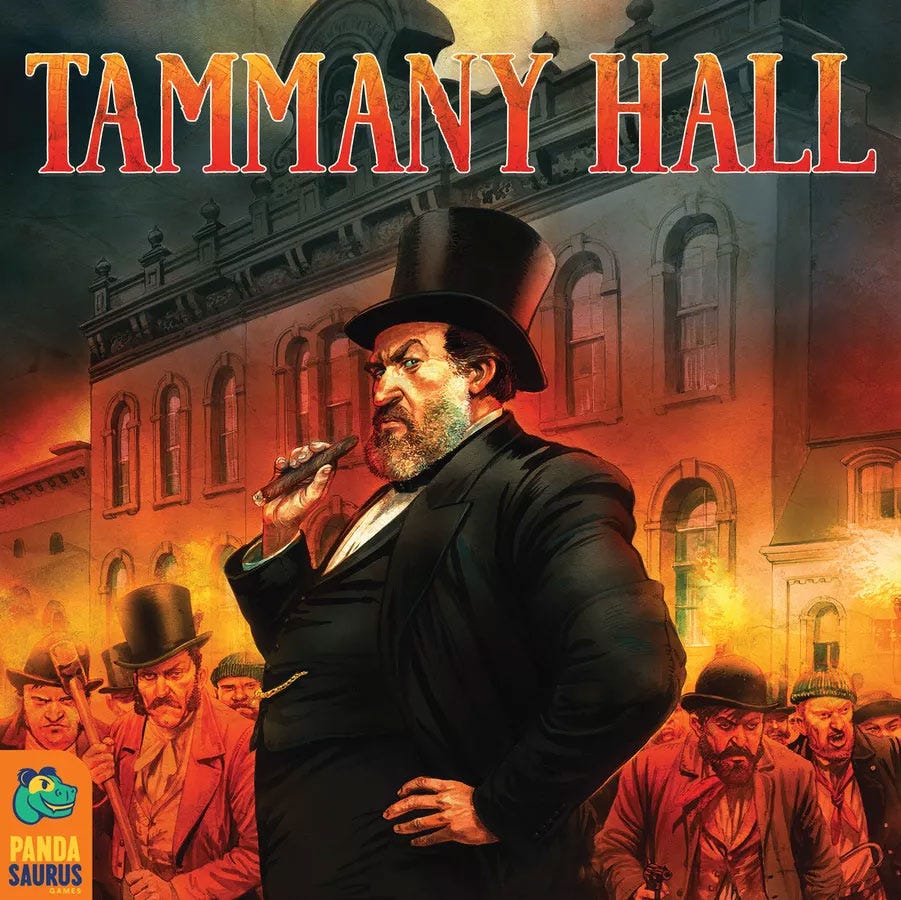
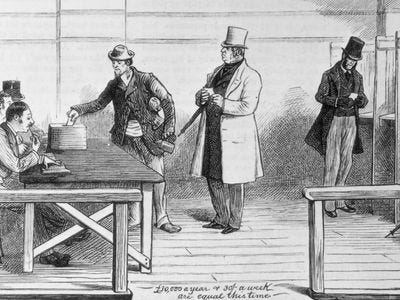
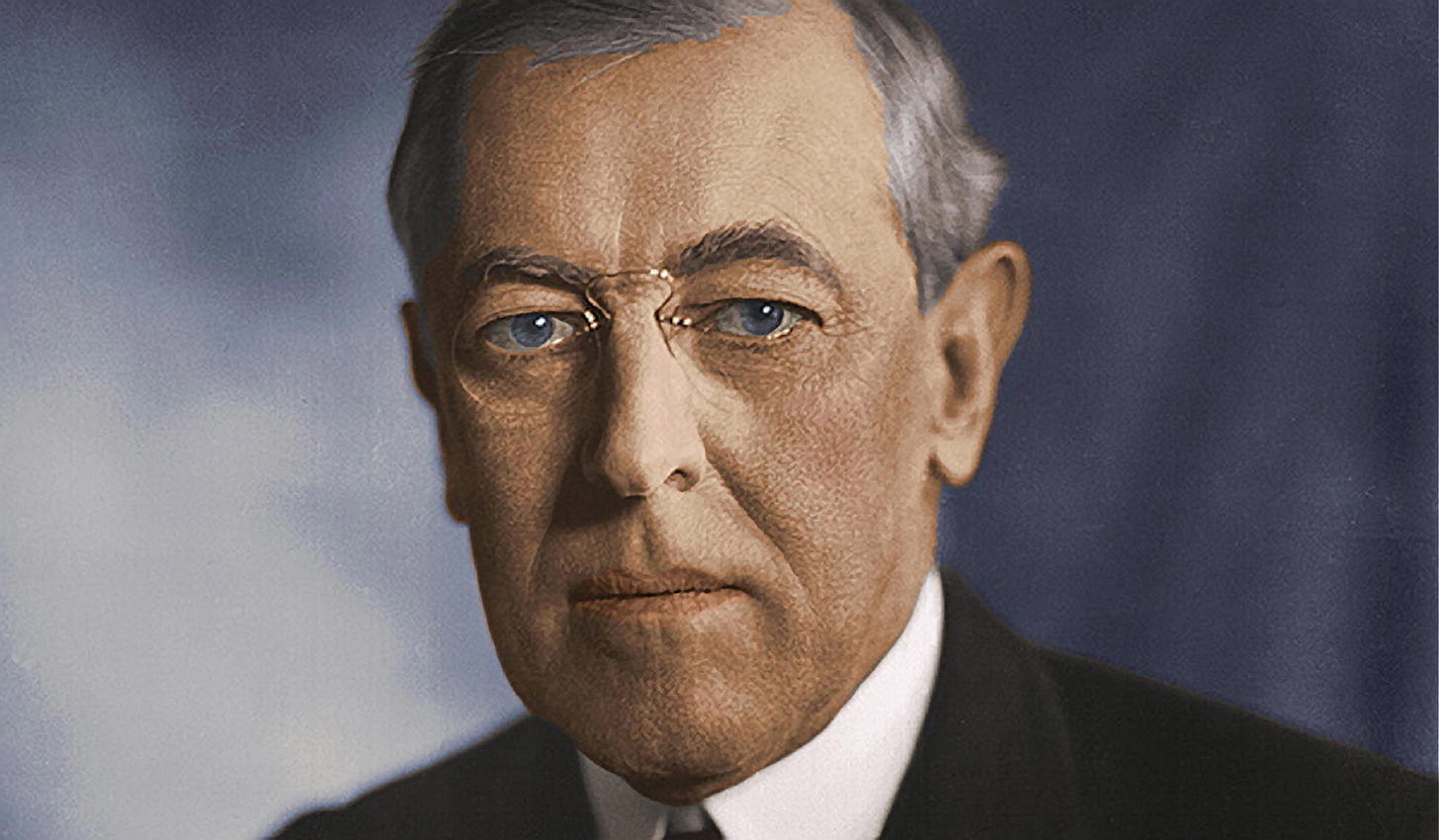


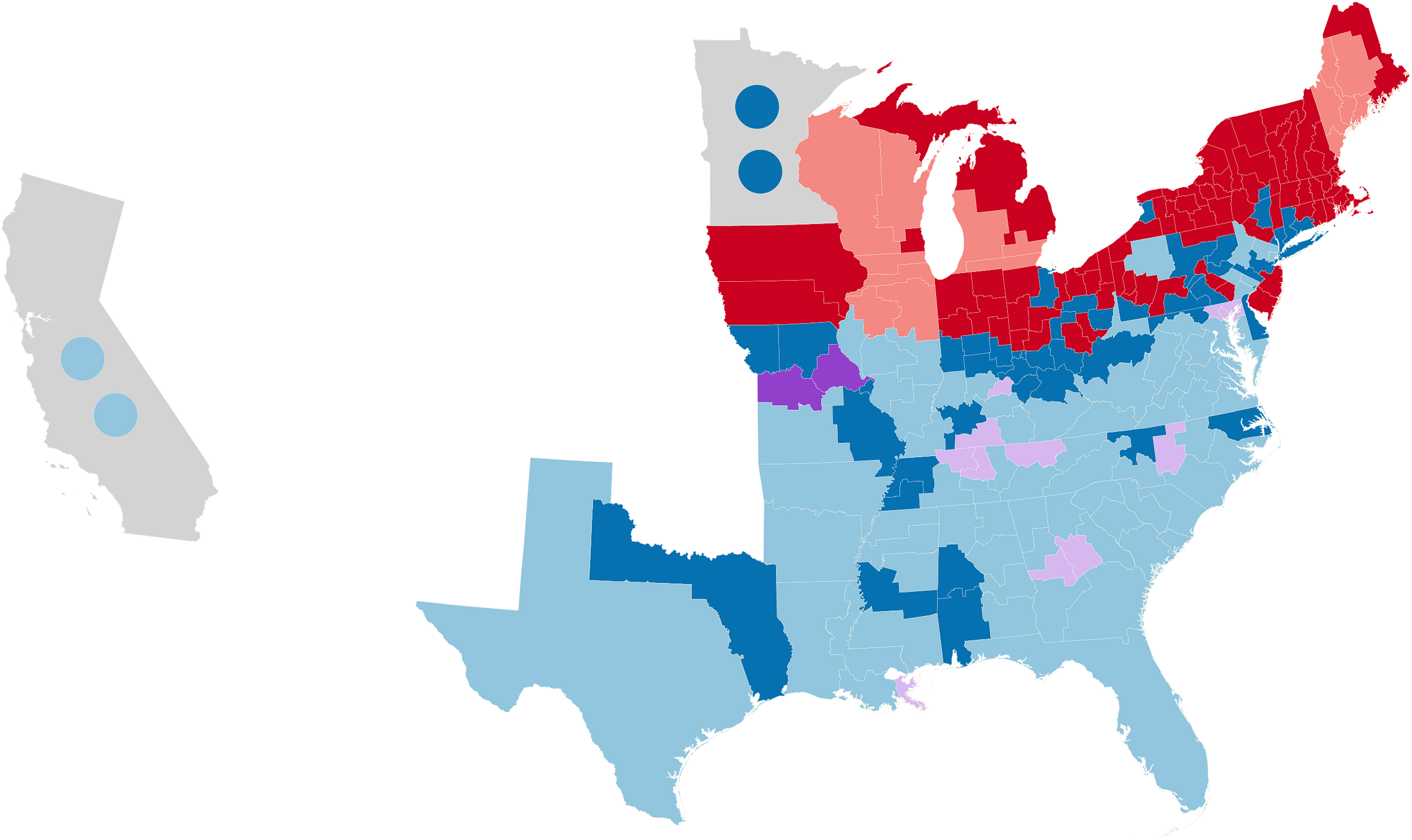
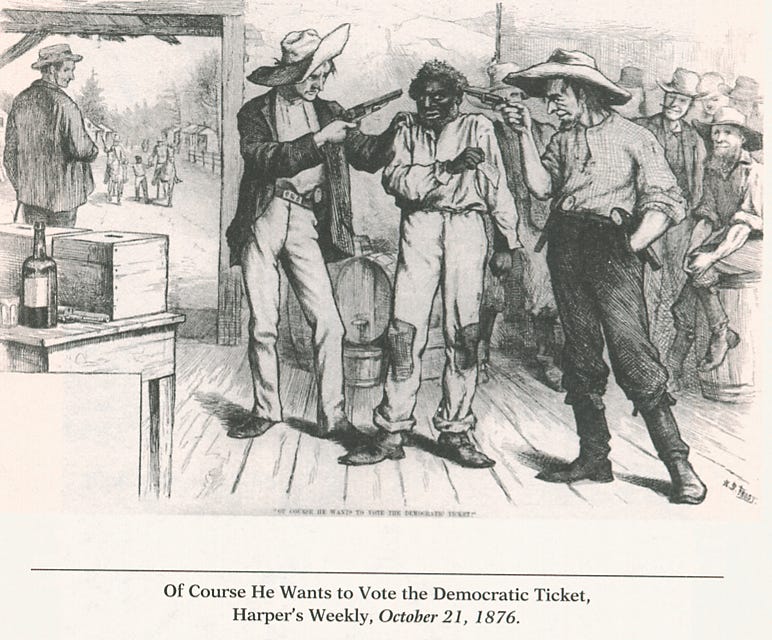








Great piece as far as the history of electioneering in the early republic. It doees repeat a lot of conventional wisdom about the pernicious Democratic urban machines. I would add another section that looks at the fact that the urban political machines received a lot of negative attention in the press because the big money owners' papers of the WASP power structure had no love for the Catholic machines.
The Dem urban machines like Tammany actually provided for their working class communities - something the oligarchy detested and still does. Similar to the myth that the Kennedys were the only political family to have extramarital affairs.
The biggest powerbase within the US was positioned within Republican party. The oligarchy was firmly Republican for almost all of post-bellum US history and we could argue they still are given the current realignment. The old Ivy League, Skull & Bones WASP guard who ran the massive US industrial base - and crushed the south in the Civil War - ran the real machine. If they weren't considered "corrupt" its only because they wrote the laws and owned the biggest papers. Just like the Democrats now.
When did we get the "secret" ballot? I know that in the 1880s, the voter chose a democratic or republican ballot, and deposited it in the box in view of the ward heelers hanging around. Later, they could tell whether you voted a straight ticket by how long you were in the voting booth (until recently, at least in Illinois, the straight ticket option was abolished.)